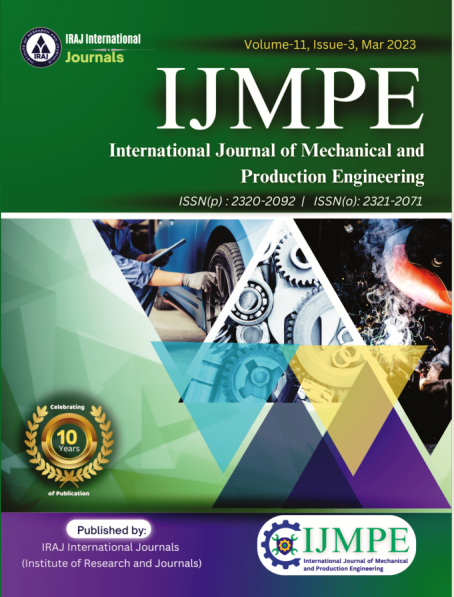Publish In |
International Journal of Mechanical and Production Engineering (IJMPE)-IJMPE |
 Journal Home Volume Issue |
||||||||
Issue |
Volume-4,Issue-12 ( Dec, 2016 ) | |||||||||
Paper Title |
Corrosion Behavior Comparison of Austenitic Stainless Steel 304l and 316l in Aqueous Sodium Chloride Solution by Using Electrochemical Impedance Spectroscopy | |||||||||
Author Name |
Andi Rustandi, Burhan Ramadhan, Ahmad Fadhil, Suganta Setiawan | |||||||||
Affilition |
Metalurgy and Material Department, Faculty of Engineering, University of Indonesia, Depok, Indonesia | |||||||||
Pages |
70-74 | |||||||||
Abstract |
Corrosion behavior of austenitic stainless steels 304L and 316L types in various concentrations of aqueous sodium chloride solutions were investigated related to its pitting corrosion resistance. Experimental testing method was carried out by using electrochemical impedance spectroscopy (EIS) at room temperature (27oC) to evaluate the change of corrosion mechanism based on its polarization resistance and capacitive impedance. Aqueous sodium chloride solutions were prepared with various concentration i.e. 1%, 2%, 3.5% , 4% and 5% w.t. The testing results which were represented by Nyquist graphs and electrochemical equivalent circuits showed that the impedance magnitudes of austenitic stainless steels which indicated its corrosion resistance were influenced by sodium chloride concentrations and the chemical composition of alloys of 304 L and 316 L respectively. Rank of impedance magnitude of 304L and 316L at various chloride concentrations from the highest to the lowest were 1%, 2%, 5%, 4%, 3,5% w.t NaCl consecutively. It was observed that the lowest corrosion resistance of both alloys was at 3,5% w.t NaCl which was similar to typical seawater solution. This was caused by the presence of maximum dissolved oxygen solubility. SS 316L has higher impedance magnitude compared to SS 304L at all concentrations of aqueous sodium chloride solution. Keywords- Austenitic SS 304L, SS 316L, Corrosion Behavior, Pitting Corrosion Resistance, NaCl aqueous solution, Electrochemical Impedance Spectroscopy. | |||||||||
| View Paper | ||||||||||